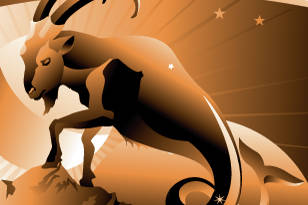January is considered the coldest month of the year in the Northern Hemisphere. This move is all about sowing seeds — such as ideas, goals and New Year’s resolutions; all of which are nurtured through the year.
Native Americans have dubbed January as the Wolf Moon Month.
Astrological signs: Capricorn and Aquarius; Birthstone: garnet; Color: red; Flowers: Carnation and snowdrop; Birds: black-capped chickadee and great horned owl; Trees: Apple, fir, elm and cypress; Days Observed: New Year’s Day and Martin Luther King Jr. Day.
Capricorn is the tenth month of the zodiac, with the symbol of the fish-goat hybrid. The element is Earth and the ruling planet is Saturn. Capricornian people are hardworking, very structured, high achievers with high goals. Aquarius is the eleventh sign of the zodiac with the symbol of water-bearer. The element is Air. The Ruling planets are Uranus, the planet of freedom and vision, and Saturn, the planet of limitation and contradiction. Uranus is associated with mental studies, electricity and astrology; Uranus rules Aquarius. Saturn is associated with the trials of life experience. Saturn rules Capricorn and is very disciplined, punctual and conserves material resources. Saturnians can be restricted by fears and lack of confidence. Aquarians are independent, mysterious, free-spirited and eccentric.
Birthstone for January is the garnet, which is believed to cure depression, protect against bad dreams and relieve diseases of the liver, as well as hemorrhages. It’s thought to keep the wearer safe during travel. This stone is symbolic of a quick return and separated love.
Traditionally, this stone is given for the 19th anniversary of marriage. The garnet is a gift of love, and comes from the Latin word “garanatus,” meaning “seedlike” — in reference to the pomegranate. It’s a stone of posterity and abundance, encouraging motivation and inspiration. It comes in a variety of colors, of which red is traditionally the most popular.
Beside being January’s birthstone, garnet is the state mineral of Connecticut, state gemstone of New York and Idaho, and its use is dated back to the Bronze Age, 5,000 years ago.
The month’s color is red, symbolizing passion, danger, strength, power, fire and blood. It enhances human metabolism, increases respiration rate and raises blood pressure.
January’s flowers are carnation — which can mean anything from pure love to love not shared to rejection or disappointment. While the snowdrop used to be considered bad luck because it always seemed to appear to grow in graveyards, now it signifies hope and beauty.
The birds are black-capped chickadee, signifying the happiness and fulfillment we get from connecting to our natural surroundings and the great horned owl symbolizes trust — connecting one to the Source, even without physical proof.
The tree for Jan. 1 is the apple tree, meaning knowledge, immortality, temptation and the fall. Jan 2-11 is the fir tree, meaning springtime, fortitude and immortality. It’s an emblem of wisdom, learning and the moon.
The original name for January is the Roman “Ianuarus,” the Saxon term for Wulf-monath (wolf month), and Charlagmagne’s definition Wintermonath (winter cold month).
• By Bonnie Marie Playle

